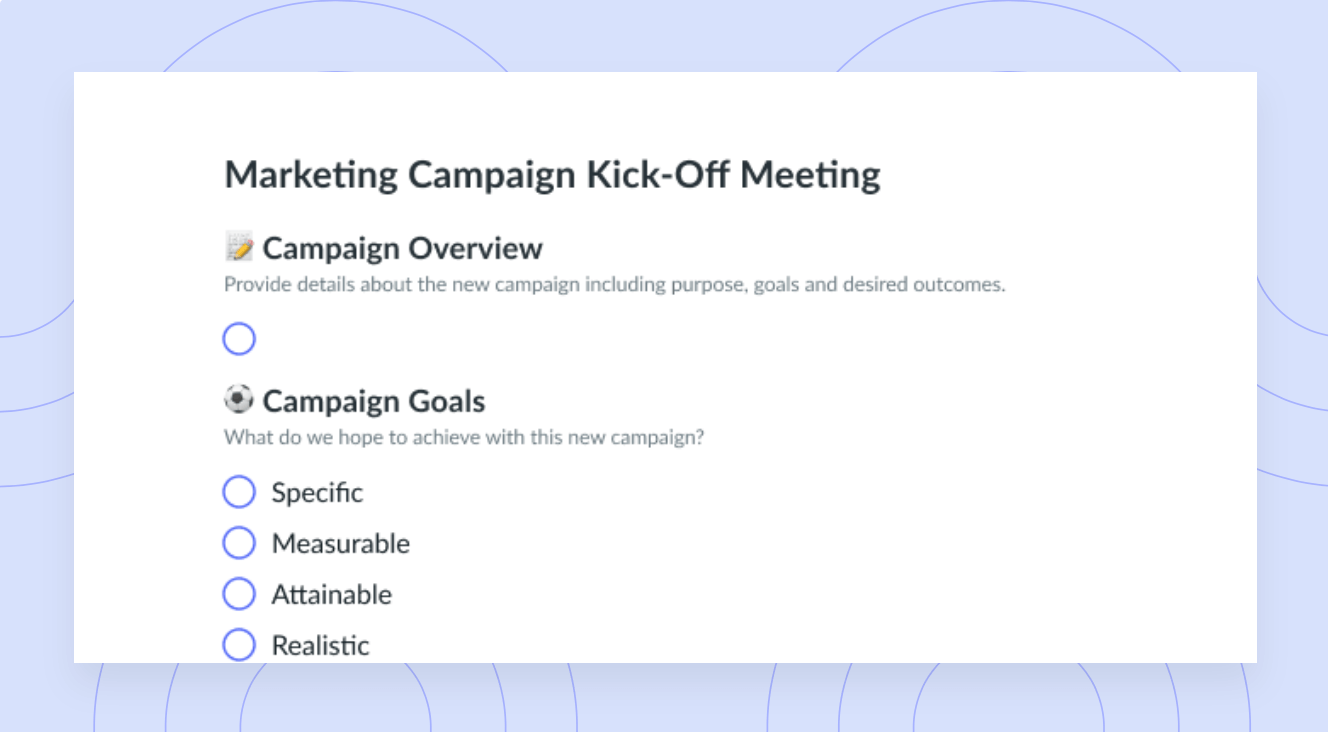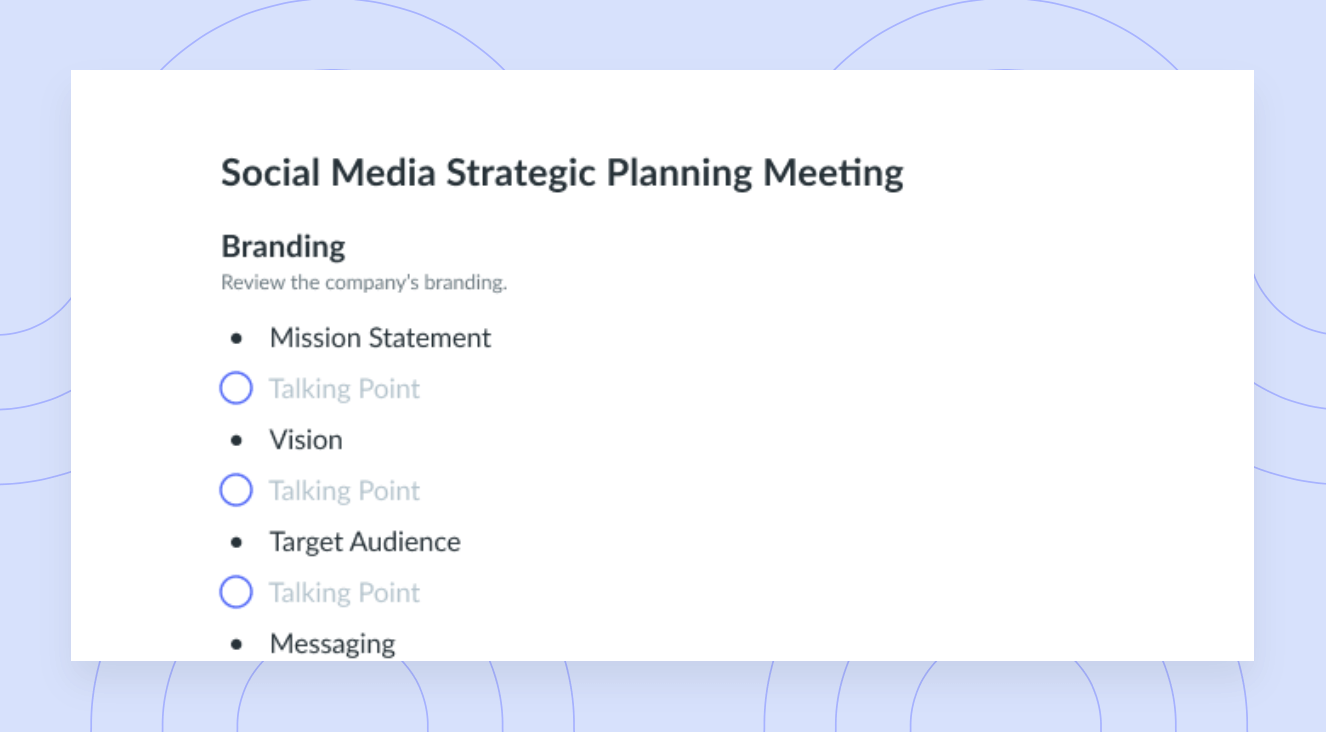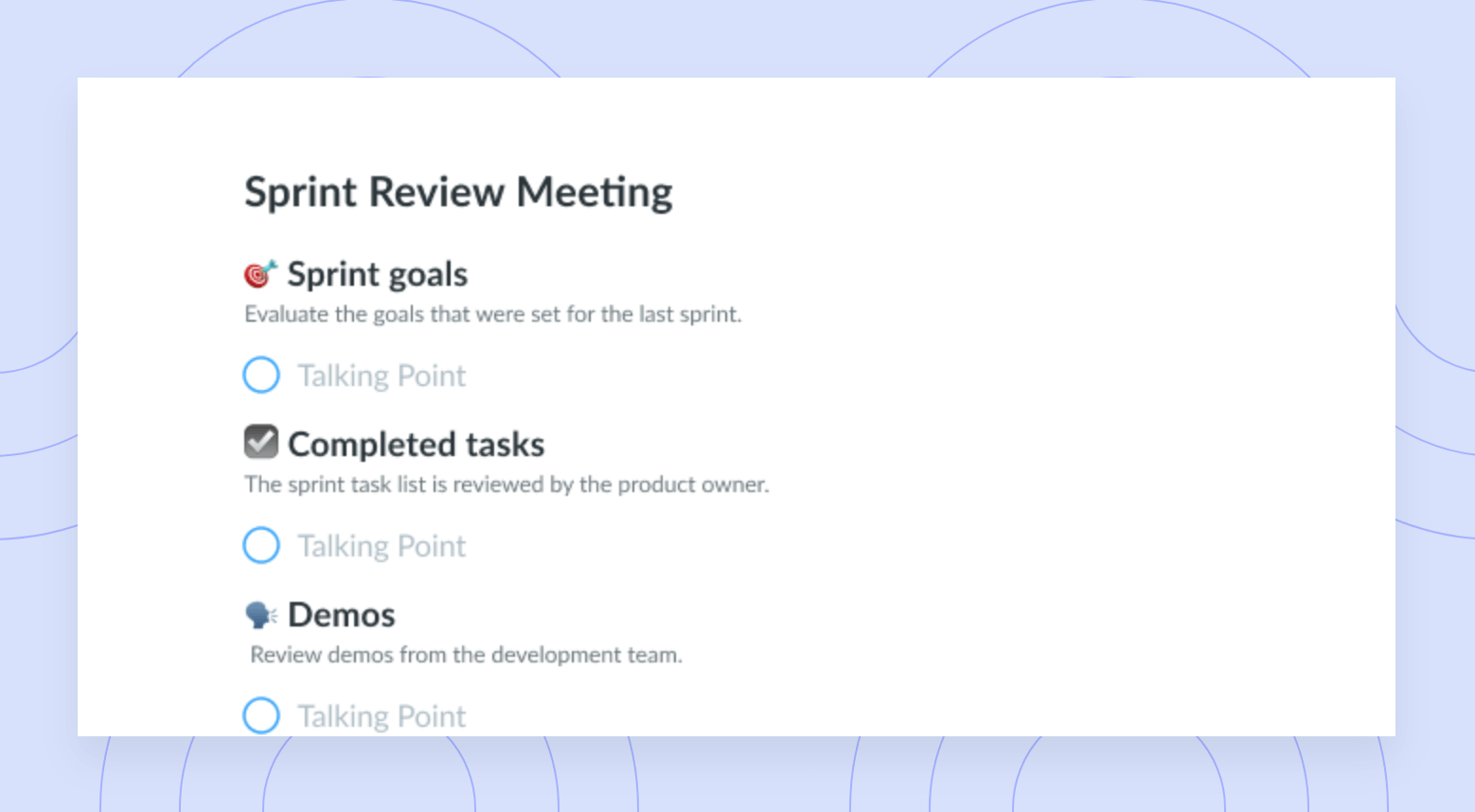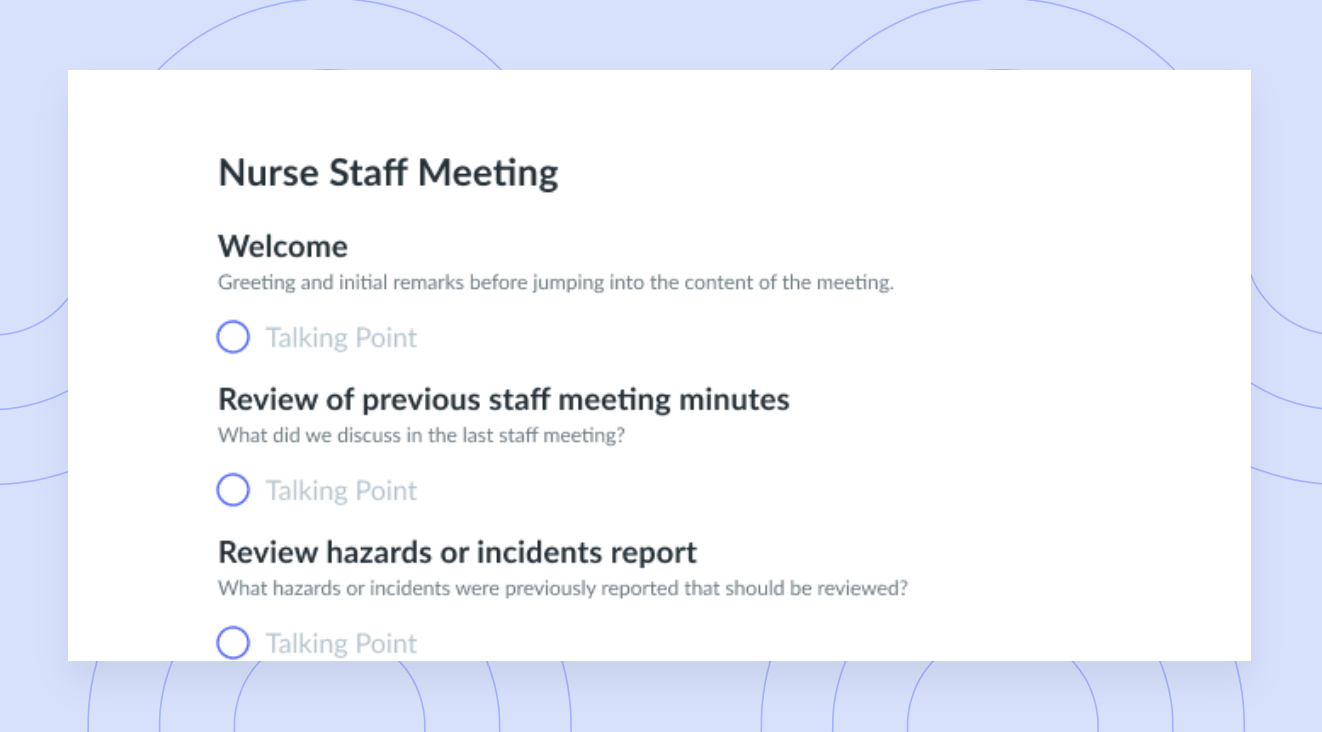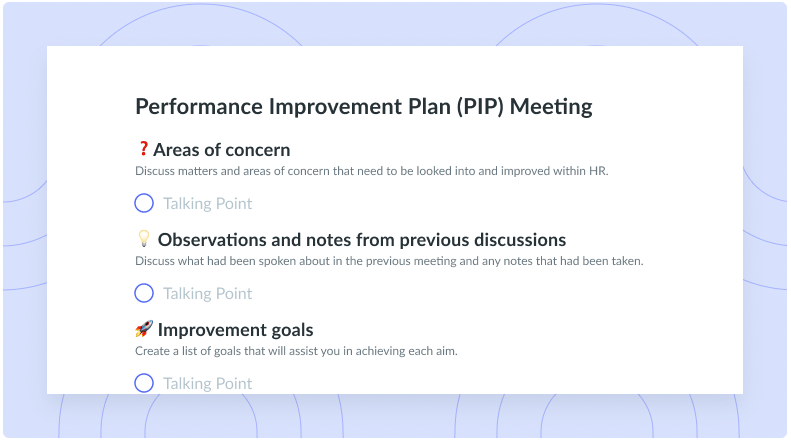Operations Management: Key Functions & Tools
Discover actionable insights for optimizing processes, enhancing productivity, and achieving operational excellence in your organization.
There are all kinds of important moving parts in your organization that you need to keep running as smoothly as possible. After all, effectively managing your operations helps your organization predict future needs, manage inventory, and keep quality top-notch. In this article, you’ll learn more about operations management functions and why they matter.
- What is operations management?
- The importance of operations management
- The 8 functions of operations management
- Key operations management strategies
- The best tool for effective operations management
What is operations management?
Operations management is the process of forecasting, planning, coordinating, and controlling your product management and business administration. It includes creating products, delivering services, strategizing about your next project, and working toward and reaching milestones. Improving operational efficiency is key, too, so that you and your team hit these marks with optimal speed and effectiveness—and without compromising on quality.
The importance of operations management
Operations management is the backbone of your organization’s success. Think about it like this: When all the parts of your machine are well-oiled, the gears turn with no resistance.
When your processes flow seamlessly, your productivity and operational performance hit their peaks. Your organization’s budget and finances stay in check, too, so you’ll have all the resources you need to move full steam ahead.
Once you’ve gotten into a groove with your operations, your products and services will be consistently and reliably high-quality. This translates into an excellent customer experience, setting a foundation for trust and loyalty across the board.
The 8 functions of operations management
Different types of operations management focus on different levels of your organization; at the same time, they all work together to keep your business moving toward its vision and achieve operations goals.
Within every type of operations management, there are certain functions. Paying close attention to them gives you a strategy that moves mountains across your whole organization.
- Operational planning
- Finance and accounting
- Product design
- Human resource management
- Quality control
- Forecasting
- Strategy
- Supply chain management
1Operational planning
In operational planning, you dive into the nitty-gritty details of all your organization’s operations. This means taking a thorough look at every process your organization carries out. Producing goods, moving inventory, managing your team’s workflows—none of your standard procedures are off-limits. The more detailed you get, the more effectively you’ll manage your operations.

Operationalize effective meetings across your organization
The most efficiently run organizations choose Fellow’s Meeting Guidelines feature to solve their meeting problem and get more done. Meeting guidelines are a group of capabilities within Fellow that allow leaders to operationalize and set guardrails around how their company runs meetings. Speak to one of Fellow’s Meeting Experts today and get guidance on how to level up your organization’s meeting culture and meeting efficiency.
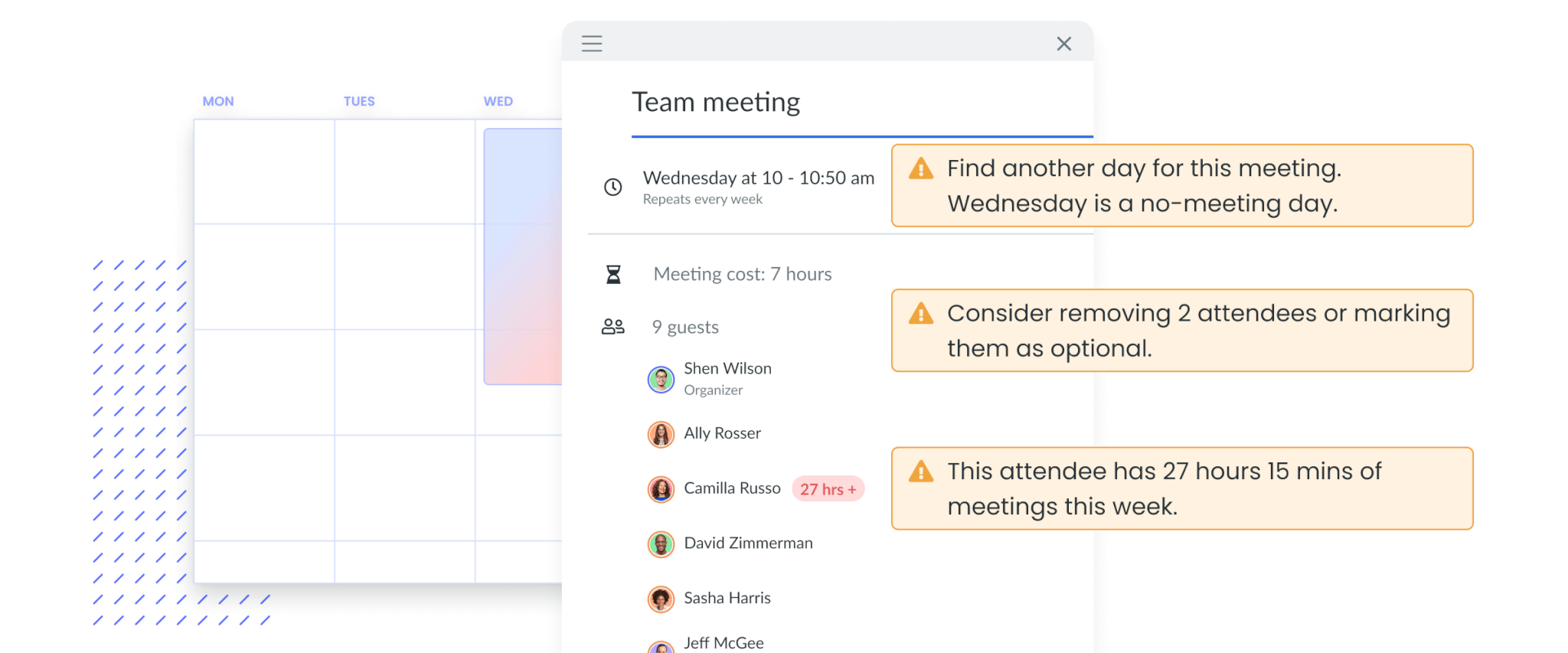
2Finance and accounting
Just about everything in business comes down to money—how well you manage finances largely determines how smoothly your operations run. From setting new-hire salaries to launching a new marketing strategy, finance management helps you spend smartly and maximize your profits.
This operations management function involves crunching numbers, identifying potential investments, and creating financial plans to achieve your production objectives. It helps you keep your costs low so you can access the resources you need. By carefully syncing your financial plans with your production objectives, your organization stays on budget with no surprise costs waiting around the corner.
3Product design
It’s important to stay in the loop about what customers want and make sure your products or services take that to the market. That’s where product design comes into play—and this operations management function goes well beyond sketching inventive ideas and features. You’ll share insights about market trends and client needs with your designers, who then transform these insights into winning products.
4Human resource management
Recruiting, hiring, onboarding, and continual training are all part of human resource management. Your goal is to give all your team members the support they need to contribute to your organization effectively.
From the initial hiring process to ongoing team development, human resources management encourages success for everyone. Training, tools, and benefits are all parts of a great package that helps your team members thrive on their professional journeys and within your organization.
5Quality control
Everything you do within your organization is geared toward raising the bar day in and day out. Quality control within operations management guides your processes toward this continuous improvement. It’s all about setting product quality guidelines and reviewing your production processes to make sure they consistently yield the best results.
6Forecasting
Forecasting is about using analytics to peer into the future of your market or industry. Sales forecasting, historical data, and economic assessments are some examples of analytics used in business forecasting.
With these analytics, you can find ways to save time and money, stay ahead of trends, and discover new avenues for growth. This operations management function also allows you to make proactive decisions that keep your organization moving upward and innovating.
7Strategy
The best goals have a strategic management process behind them, and that’s why this operations management function is so important. It involves envisioning where you want your organization to go and outlining a detailed plan for how to get there. The key is to keep your organization a step ahead of unexpected situations. This way, you keep moving your organization forward instead of only making decisions as unpredictable scenarios call for them.
Your organization’s operations strategy trickles down to the goals and objectives you set for your teams; it’s like having a blueprint that directs your team members’ individual and collective efforts.
Holding a meeting is the perfect way to discuss your operations strategy with the team. Make sure to leverage Fellow’s customizable Strategic Planning Meeting template to facilitate engaging discussions on ways to optimize your organization’s processes and performance.
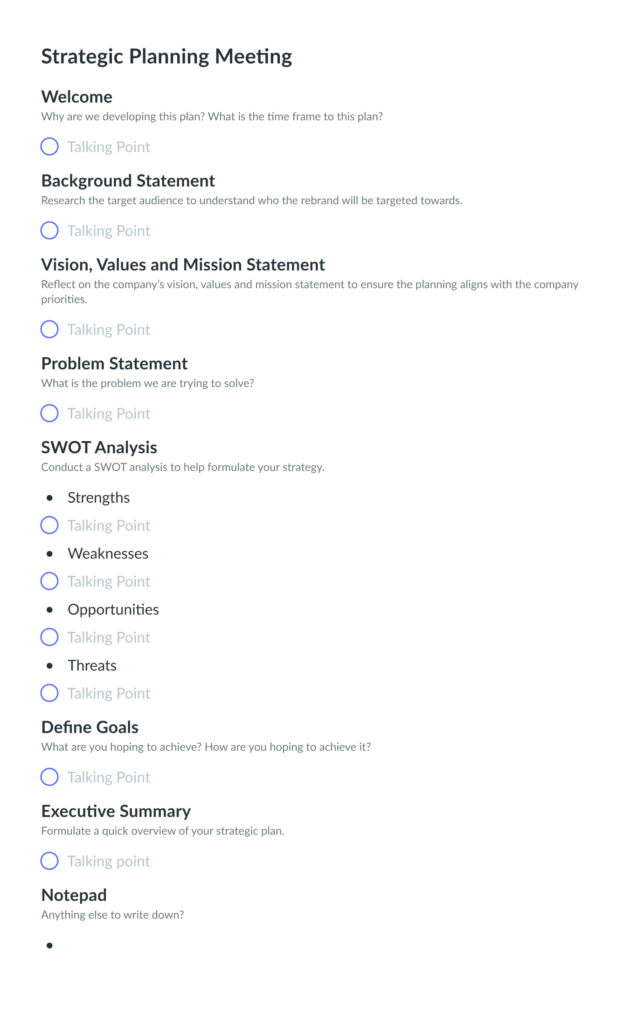
8Supply chain management
Think of all the processes involved in getting your products into customers’ hands—like ordering raw materials, stocking inventory, and assembling products, to name a few. Smart supply chain management takes as many disruptions out of these processes as possible.
This operations management function is about streamlining your goods’ movement from start to finish. The more smoothly your product moves from suppliers to your customers, the more efficiently and effectively you meet their demand.
Key operations management strategies
Below are four operations management techniques that go into every effective operations management process.
1Data use
Revenue, return on investment (ROI), retention rate, conversation rate, market share, turnover rates—these business success metrics tell you how your organization is performing. You can use these numbers and other organizational data to identify areas for improvement. Operations management is how you then chart a course for actually making these improvements.
2Process design
When you’re ready to change your operations, it’s only logical to start with your processes. As you get started, be sure you truly understand each process within your organization. You can improve processes or design new ones from this foundation to improve your operations.
During a thorough and effective process design, you’ll look at the potential risks and constraints of any changes you make. From there, you’ll consider the resources you have available to make these changes happen.
3Inventory analysis
It’s time to take inventory of your organization in a literal sense. Holding too much inventory could put your storage costs through the roof. Not having enough inventory, though, means failing to keep up with customer demand.
There are several ways to analyze and manage your inventory. ABC analysis might be the most common approach—it means ranking your products based on the value they bring to your organization. There’s also safety stock analysis, which involves figuring out how much stock to have on hand to avoid a shortage or stockout. In any case, running an inventory analysis can help you hold on to just the right amount of inventory at all times.
4Department collaboration
Every department within your organization is in charge of different operations. Imagine, though, if you maximized communication and cross-functional collaboration among your sales team, human resources department, and inventory team. All your operations would flow beautifully as your teams share ideas and strategies. Process improvement would be all but guaranteed.
The best tool for effective operations management
Operational excellence is key for organizations to stay ahead, and Fellow makes effective operations management and cross-functional collaboration easy. With its collaborative agendas, clear action items, and seamless integrations, Fellow empowers teams to streamline processes, enhance communication, and achieve operational excellence like never before.
Effective meetings lie at the heart of successful operations, uniting teams and driving productivity. With Fellow, you can effortlessly plan operations meetings and access a wealth of expert-approved templates tailored to various aspects of operations management. Whether it’s acquisition planning meetings, technology operations reviews, or project coordinator daily check-ins, Fellow provides the structure and support you need to excel.
Once you’ve wrapped up a meeting, use Fellow to gather feedback from your whole team and identify improvement areas. Then, take a look at your organization’s productivity with Fellow’s workplace analytics suite.
With Fellow under your belt, all your operations management efforts will come together!
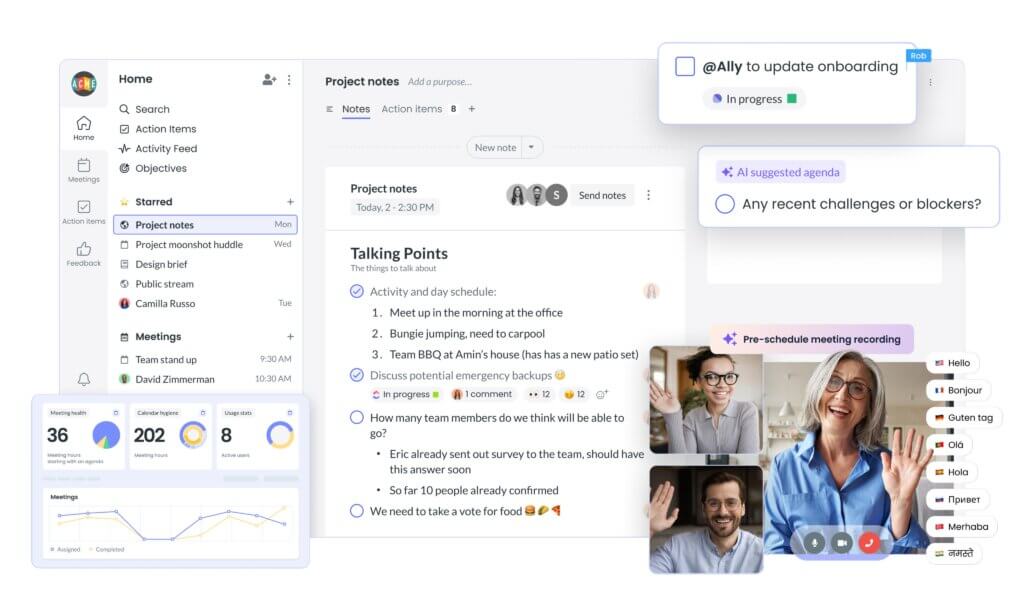

![The 5/25 Rule: How to Apply It [+ Example]](https://fellow.app/wp-content/uploads/2023/05/The-525-Rule2.jpg)








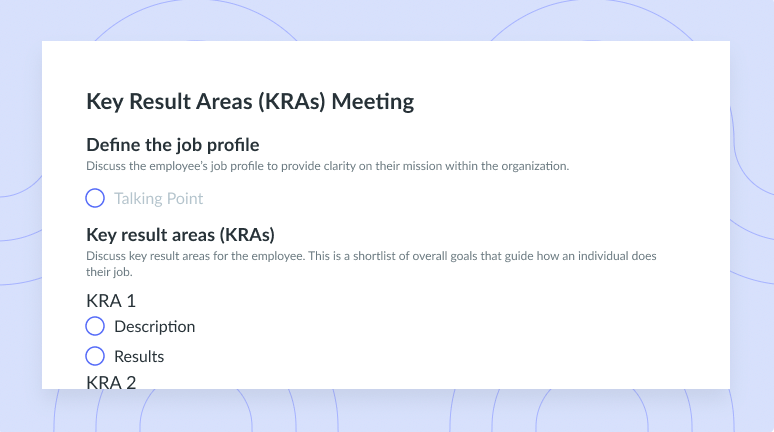
![What? So What? Now What? [Reflection Meeting] Template](https://fellow.app/wp-content/uploads/2021/08/What-So-What-Now-what-preview-v2.png)
